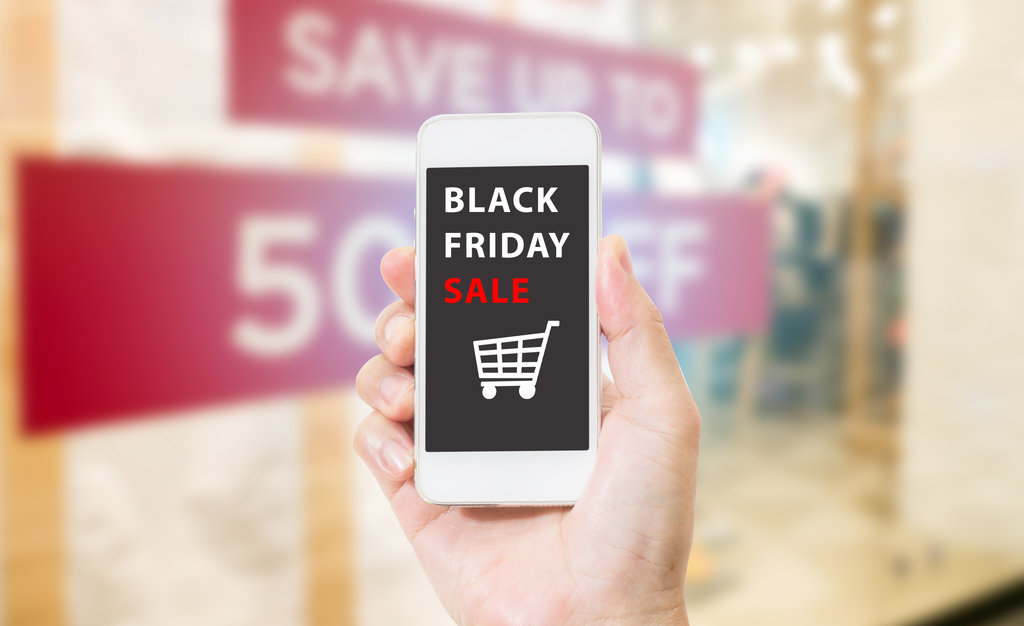Black Friday. Two words that can strike fear in the heart of even the most weathered retailer. It’s fair to say the adjustment to the Black Friday phenomenon has been difficult for retailers – we all remember the images from 2013 of people fighting in shops, websites crashing and orders taking two weeks to be delivered.
However, Black Friday 2016 was very different to the craziness of 2013 and 2014. Dare I go as far as to say it felt relatively calm? With a whopping £6.45 billion spent over the seven days of Black Friday week and very little in the news about issues, it’s clear that retailers have learnt a lot from previous years. They are now planning well in advance – pouring over analytics, testing performance well in advance, ensuring fulfilment doesn’t fall over at the very last stage.
And that wasn’t the only thing different about Black Friday 2016…what began as a one day phenomenon started moving to a five-day event and there was a significant shift from offline to online with online sales over the period rising 36%, with many shoppers choosing mobile over desktop.
So, what can we expect from Black Friday 2017?
What we already know
- Black Friday falls on 24 November, however, as we know many retailers are now running sales for up to a week over this period.
- Your website is going to see a huge spike in additional traffic so you need to ensure you have more infrastructure capacity on the site in place and that you test the web platform’s performance for different scenarios in advance.
- Preparation is key.
What else do we know?
There are some not so obvious questions that we can find the answers to:
- What is the journey profile on Black Friday?
- Are our regular customers coming or new and/or irregular bargain hunters coming?
- Do we offer an “expected” Black Friday experience; as in highlighting the bargains and deals that are on offer for this “one time only” – and to be able to find, buy and transact as soon as possible via a frictionless experience.
Two main target markets on Black Friday
Loyal customer – those customers who regularly visit and have an idea of what they want and wait for sale time to buy from that particular retailer. They are typically more focused and have a more explicit idea of what they want. For example, a particular handbag or a particular style by a specific designer.
Bargain Hunter – those customers who are loyal to the price only. They are tracking a number of different retailers for the same product and will buy it from whoever. They are typically not as informed and will buy the item required either on impulse or to meet a general need. They need a handbag from a well-known designer of an in-fashion style at a great price.
Optimising the experience
Today’s consumers expect to shop on their own terms: on the device they want, where they want, when they want all with a consistent experience. While retailers increasingly deliver sophisticated customer experiences to shoppers, there are times when a simplified option might be exactly what the customer wants.
Focus on event shopping conversion instead of the customer
The key objective of Black Friday is selling more, it therefore makes sense to increase site throughput by creating a more streamlined customer journey.
Why reduce range?
- Give customers what they want. Analyse data from previous years to understand what MOST shoppers are looking to buy.
- Curating a smaller range enables you to sell more quickly, while maintaining high control of stock, eliminating performance concerns and delivering a good end user experience.
Why reduce browsing time?
- Maximise your system resources on what is important for that period.
- Look at Site Search Optimisation – use of site search goes up 50% during Black Friday.
- Alternative Navigation such as Gift Finder.
Why reduce checkout time?
During Black Friday shoppers are driven more by price than by the intricacies of customer experience and are likely to get frustrated by complex checkout processes:
- Usually a standard goal of any retail site – yet still a common pitfall.
- Key reasons cited for cart abandonment are unexpected shipping costs (28%), had to create and account (23%), concerns about security (13%) and confusing checkout design (12%).
- Single click for that day based on some business rules? (Fraud, C&C, Velocity, Value).
Other considerations
- Personalisation – maybe turn it off for that day?
- Don’t forget the mobile experience – more than three in fives sales conversions took place on mobile.
- The Brexit effect – factor in more international orders.
- Make sure changes made for Black Friday only are easy to revert.
- Plan beyond Black Friday to ensure you develop a relationship with new customers.
Your Black Friday architecture
It’s not just about hosting and site capacity – take a holistic view:
- Focused merchandising; don’t forget to tell the customers the deals!
- Site feature relevance review; turn off or remove anything not relevant to this sale.
- Optimised experience for the event; make it easy to find and buy!
- Hosting and capacity still has a place; be prepared to bring in more processing power, but try to use what you have efficiently.
Micro-services
- Consider bolting on a site just for Black Friday; maybe a small pop-up site would work better just for Black Friday?
Ensure your platform allows you to capitalise on peak trading periods
Most of the modern enterprise commerce platforms provide the capability to scale for peak periods, provide a seamless checkout experience and allow you to easily reduce your range and revert back. If your platform doesn’t make it easy for you to capitalise on peak periods, maybe it’s time to consider upgrading your platform.



